Customer success programs: How to drive impact
Key customer success strategies and metrics to boost customer loyalty and reduce churn.
Today’s most innovative and emerging companies invest in their customers’ happiness. In fact, growing businesses are 21% more likely to say their customer’s success is “very important” than stagnant or declining companies.
Many leaders understand that customer success (CS) is a competitive differentiator and revenue contributor that will drive long-term company growth. However, there is still a lack of understanding of CS and how to measure its impact.
In this guide, we dive into the details of customer success and lay out the key metrics that’ll enable you to take strategic, business-impacting action.
What is customer success?
Customer success is a business function that helps customers get the maximum value of a product or service by proactively delivering solutions and answers. It’s a strategic investment that aligns your customers with your company’s goals, allowing for mutually beneficial outcomes.
Why is customer success important?
CS teams help boost customer satisfaction and retention, thus increasing revenue and customer loyalty. Simply put, when customers succeed, so does the business.
When deployed effectively, a customer success strategy:
- Reduces churn
- Increases customer satisfaction
- Boosts revenue
- Creates more upsell and cross-sell opportunities
- Cultivates customer advocates and promoters
- Engages with customers that regularly use the product(s) and/or service(s)
Generating more revenue at a lower cost is even more prevalent in the business-to-business (B2B) space, where opportunities to upsell and cross-sell are often dependent upon product adoption. Customer success provides the function for creating these possibilities and capitalizing on them.
Customer success vs. customer service
Customer success is often confused with customer service. The difference between the two functions is that customer success is proactive, whereas customer service is reactive.
Service teams resolve customers’ immediate problems. A customer will call or email with an issue, and the service agent will help fix it quickly so the customer can be on their way.
Customer success teams anticipate problems and provide solutions before they even occur. They seek opportunities proactively by leveraging customer feedback and company data—providing the long-term support needed to generate customer loyalty and advocacy.
Success also sheds light on areas of improvement for the customer’s lifecycle experience so that the business can make strategic changes to the journey. But ultimately, their priority is the customers’ success. And in doing so, both customers and the organization can succeed.
Customer success performance metrics
A CS program is based on having a mutually beneficial relationship, so it’s essential to measure both the company's and the customer's success. This includes two key categories: customer engagement and return on investment (ROI).
Customer engagement
The top three metrics customer success teams should use to measure customer engagement are Customer Satisfaction Score, Net Promoter Score®, and Customer Effort Score. All three rely on collecting real-time customer feedback and data.
Customer Satisfaction Score (CSAT)
You can measure Customer Satisfaction Score by asking customers: “How would you rate your overall satisfaction?” with your company and its products, services, and interactions.
A five-point scale is most commonly used, with options ranging from very unsatisfied, unsatisfied, neutral, satisfied, and very satisfied. Customer success teams should use a CSAT survey to track customer satisfaction in the short-term (after a few interactions) and long-term (quarterly, yearly, etc.). You could send a survey after five exchanges, for instance, or after a set amount of time has passed since your last interaction.
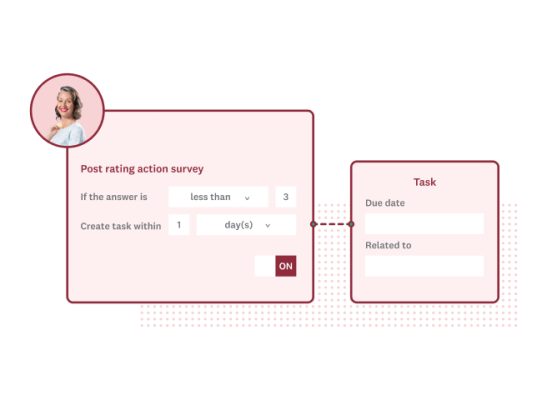
Once you implement an improvement, validate its success by comparing CSAT before and after those changes roll out. Over time, your satisfaction score can demonstrate the ROI of your service team’s efforts.
Once you implement an improvement, validate its success by comparing CSAT before and after those changes roll out. Over time, your satisfaction score can demonstrate the ROI of your service team’s efforts.
Net Promoter Score® (NPS)
NPS asks the question: “How likely are you to recommend us to a friend or colleague?”
The customer ranks their likelihood on a scale of 0 to 10—with 0 being highly unlikely and 10 being extremely likely. On the rating system, people who select 9 or 10 on the NPS survey are promoters, 7 or 8 are passives, and those who choose 6 or below are detractors.
NPS is a relationship metric that evaluates the overall customer relationship and end-to-end experience, which helps CS teams understand the holistic experience.
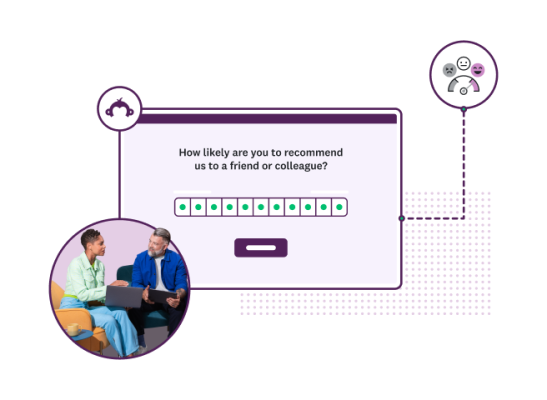
Use NPS surveys to identify your most loyal customers and those at risk of churning. Don’t shy away from engaging with detractors. View it as an opportunity to address their problems and show them their voice counts. And don’t forget to leverage your support from promoters by cultivating them into brand advocates.
Collect feedback at different customer lifecycle stages or by segmentation based on customers’ needs. This will enable you to spot areas of weakness that, if tackled strategically, will decrease detractors and boost customer retention.
Factors beyond CS influence NPS, including the quality, usability, and cost of the product or service. Cross-collaboration is key in optimizing this score.
Customer Effort Score (CES)
The Customer Effort Score (CES) asks the customer to score the level of effort involved with a specific interaction.
In the case of customer success, The CES survey asks customers to agree or disagree with the statement: “[Company name] made it easy for me to complete my task.”
The respondent can choose from 7 answer choices ranging from strongly disagree (score 1) to strongly agree (score 7). You should also include an open-ended follow-up question asking for response feedback.
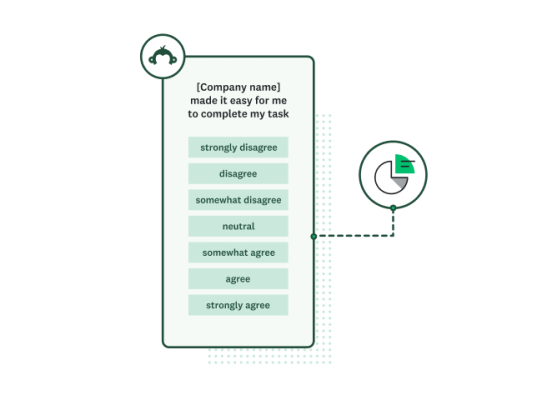
Customer Effort Score helps you measure exactly how well your customer success team can manage customer expectations and proactively deliver on their needs. The less effort your service or product requires from customers, the more likely they will stick around.
Customer return on investment (ROI)
A customer success program can generate more revenue at a lower cost. CS teams can anticipate roadblocks that customers may run into, reach out to prevent churn, and recommend premium offers that optimize upsell and cross-sell opportunities. Below are the top four ROI metrics.
Customer Lifetime Value (CLV)
Customer Lifetime Value is the total monetary value a company can expect to earn over the lifetime of a given customer relationship.
Customer success teams are responsible for enabling the annual revenue per customer and the average length of customer relationships (in years), creating a collective impact on CLV.
The more loyal customers are to your company, the higher their Customer Lifetime Value will probably be. By calculating CLV, you can collect insight and identify opportunities to improve customer loyalty within your organization.
You might find that the customer success team could do a better job at proactively identifying issues for customers, or perhaps the business could benefit from a loyalty program. This metric is also good for spotting the early signs of attrition.
Average Revenue Per Account (ARPA)
Average Revenue Per Account (ARPA) is a profitability metric that measures your company’s revenue per customer account. You can calculate it on a monthly or annual basis.

Customer success teams should use ARPA to assess their overall performance and customer segmentation. The metric is also an input for calculating a company’s recurring revenue.
Net Renewal Rate (NRR)
Net Renewal Rate is the total value of renewed and expanded contracts, whether through upsell, cross-sell, or upgrades. It’s the ratio of the total renewed revenue against the total revenue due for renewal.

The most successful customer success teams have an NRR greater than 100%—meaning you gain more revenue from renewals and expansion than you lose to churn.
Customer Retention Rate (CRR)
Customer retention rate (CRR) is a metric that measures the percentage of existing customers your company retains over a given period. It’s expressed as the percentage of retained customers who remain loyal within the identified time frame.
It answers the question: In one month, quarter, or year, how many of your customers stick around?
For customer success teams, it’s one of the primary metrics to understand customer loyalty.
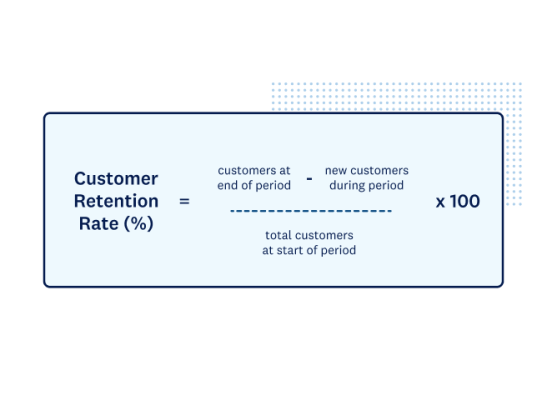
Key challenges for customer success teams
Customer success professionals must ensure buyers achieve their desired outcomes with the company’s products or services. Everything from onboarding to implementation, to renewals and more, falls under their purview.
With such a vast range of responsibilities comes numerous challenges. Luckily, there are many tools and strategies the team can implement to conquer these hurdles.
Keep reading for the top seven customer success challenges and how to overcome them.
Challenge #1: Fostering meaningful customer relationships
A customer’s relationship with a company often begins during the marketing and sales cycle—long before a customer success professional begins their relationship with the client. That means by the time the success team is onboarding a new customer, they’ve already had numerous interactions with the business.
The onus lies with customer success managers (CSMs) to remedy any unfavorable opinions that customers might be harboring while also establishing a great rapport and working relationship. Here’s how.
Build a customer-first company culture
An organization has a customer-centric culture when all employees and leaders see the customer at the core of everything they do. This means that customer happiness, not just satisfaction, is the driving force for all strategic actions and communications—both internally and externally.
Customer success employees should feel empowered to listen to customers, understand their needs, and act on their behalf. As a result, customers trust the organization’s consistency and quality.
To nurture a customer-first culture, customer success leaders should:
- Share customer feedback across departments in an ongoing and consistent way
- Recognize creative solutions to internal and external challenges
- Encourage an employee well-being program for their success team
- Educate and empower customer success managers with new and innovative ways to contribute to a customer-centric culture
- Recognize critical milestones and moments along the team’s journey
For more actionable insight to uplevel and transform customer experience (CX) culture, read our article about CX maturity.
Clearly define the customer’s goals, and expectations
According to a report by Salesforce, 76% of customers believe companies should understand and clearly define their needs and expectations.
Additionally, customers are better equipped to achieve success with your company when goals and expectations are clearly defined from the beginning.
Because each customer has a unique use case, their goals and objectives will also be particular to their organization. It’s vital to set goals early during the customer onboarding process and create a 90-day implementation action plan to succeed. For instance:
- Week one: Lead kick-off call and introduction with key stakeholders
- 30 days: Host product and process training sessions with all users
- 60 days: Create key performance indicators (KPIs) of success specific to the customer’s unique use case
- 90 days: Measure initial success and establish a plan to scale usage
Ensure the goals you set are SMART: Specific, measurable, achievable, relevant, and time-bound.
For example, your customer, Acme Corporation, purchases your CX platform to improve its Net Promoter Score. In that scenario, a quarterly SMART goal might look like this:
- Specific: Increase NPS by eight points quarter over quarter
- Measurable: Adopt a monthly survey schedule to identify trends and areas of improvement
- Achievable: From Q1 to Q2, Acme Corporate increased its NPS by five points. With new systems in place, we’re confident that they will reach their eight-point goal
- Relevant: Acme Corporation deeply values its customers, and this goal will help its team improve sentiment
- Time-bound: As of October 1, 2023, Acme Corporation has an NPS of +43. By January 1, 2024, the organization will have an NPS of +51 or higher
Maintain regular communication
Regularly connecting with customers may seem like a no-brainer. However, customer success professionals often have many tasks, meetings, phone calls, and emails that may prohibit prompt responses.
Jeannie Walters, CEO, and founder of Experience Investigators™, suggests automating customer journey outreach at critical stages in the customer lifecycle.
Ensuring CS professionals have a manageable client list will enable them to maintain regular communication. This is vital for many reasons, including:
- Driving product adoption and retention
- Quickly pinpointing and solving customer roadblocks
- Establishing customer trust and rapport
- Enabling customer success managers to identify areas for cross-sell and upsell opportunities
- Identifying customer health and preventing churn
There’s no cut-and-dry rule for how often you should communicate with customers. For instance, you’ll likely contact a customer more often during the onboarding process. Additionally, various factors dictate how often you’re in touch, like industry, company size, product usage, contract value, etc.
Walters suggests setting “habit goals” to maintain consistent communication. For instance, a customer success manager could set a goal to reach out to five customers daily via email and speak to 10 weekly via phone or Zoom.
CSM at a technology company could also set a goal to provide two product training meetings within one month of onboarding. To maintain product adoption, customer success managers could host weekly “office hours” to ensure all product users have the opportunity for one-on-one communication.
The amount of customer interaction is dependent on your business. But CSMs should understand service deliverables that fit the needs of your organization and customers.
Challenge #2: Balancing users’ wants with the product roadmap
While having a product-centric culture is important, it’s also critical to put the customer at the forefront of product development. After all, your product and services are for customers.
That doesn’t mean all product innovation should stem from customer feedback. Customer wants and business goals should carry equal weight when constructing the company’s short and long-term product vision. Here’s how.
Break down silos between Product and Customer Success
Product and customer success teams share similar processes to gather, analyze, and act on customer data, including understanding the customer’s needs and pain points.
The work is often done in a vacuum, with the CS team focusing on the broader overall customer experience, while the Product team focuses on product development and the user experience. This misalignment leads to reduced efficiencies, wasted resources, and greater customer friction.
According to Annette Franz, the founder and chief experience officer of CX Journey Inc., both company executives and department leaders should work together to create processes that:
- Improve cross-functional and organization-wide communications and interactions by initiating, supporting, and facilitating the conversation starters
- Share cross-functional collaboration stories and acknowledge the successes and lessons learned
- Work toward a common goal, in a very vocal way, i.e., talk about the common goal and how each department impacts it
- Speak the same CX language across the organization, using a common vocabulary when it comes to the customer and CX overall
Effectively prioritize product capabilities and improvements
CSMs should have access to a publicly available product roadmap to effectively communicate planned product enhancements during their customer conversations.
Sometimes customers’ requests for new or enhanced product features don’t align with the organization’s product vision, roadmap, and long-term goals.
Other times, customers’ inquiries reflect planned releases on your product roadmap. In those instances, record the volume of requests per feature and work with Product to prioritize or deprioritize accordingly.
It’s vital to track these requests in a centralized location that both the Customer Success and Product teams can access. Consider creating a survey that CSMs can easily complete during customer conversations.
Create an effective feedback loop with the product team
Product managers and developers should have access to customer feedback in real time. This provides real-world context to customer success team feedback enabling the Product team to track unique usage scenarios while making adjustments quickly.
Let’s say, for example, that you are conducting a post-transaction CSAT survey for your contact center. The survey uncovers that many customers are reaching out because there’s a bug within a specific piece of your product.
Now CSMs and service professionals deal with angry and frustrated customers who are having issues completing their tasks more than ever before.
The CS team must share the feedback with impacted teams in real time to get all hands on deck to:
- Fix the defect (Product)
- Prepare for a solution (Contact Center)
- Get the messaging out to customers apologizing for the issue and let them know what you’re doing to remedy the problem (Customer Success)
Challenge #3: Maintaining a single source of customer data
Cultivating a single source of truth to house customer data ensures the entire customer success team has a comprehensive view of client health and sentiment. It also enables CS managers to partner with other department leads and make strategic, collective business decisions that improve the customer journey.
Connect customer success data with your CRM tool
Integrating customer experience data within your CRM tool enables every leader in the organization to gain insights and:
- Add depth to your standard customer records
- Reduce duplicate data
- Ask the right questions throughout the customer lifecycle
- Correct bad customer experiences faster
- Spot new customer trends
- Create a culture of action
Learn how you can run a successful CS program by connecting customer experience data with Salesforce. Download guide.
Educate employees to use technology and tools effectively
Tools and technology require new skills and knowledge; ongoing, focused, and customized education is critical to success. As you introduce technology and tools, each CS employee should know how to use them for specific tasks and insights.
Learning paths provide direction to employees and help managers track on-demand training and education. Learning Management Systems (LMS) provide automated suggestions for ongoing training and education based on skill assessment and employee-need analysis.
Leaders can provide expectations around training, and some teams may want to provide internal certifications for those providing business intelligence and customer insights throughout the organization.
Challenge #4: Collecting and acting on customer feedback
When executed throughout the customer lifecycle, gathering and taking action on customer feedback enables success teams to:
- Make more strategic decisions
- Remedy customer pain points in real time
- Understand customers’ likes and dislikes
- Improve Voice of the Customer programs
- Evolve the product roadmap
- Minimize customer churn
The biggest advantage of using customer feedback is driving significant business improvements through data-driven decisions—you’ll know you’re taking the right actions because your customer data tells you so.
Here’s how to create a feedback program that elevates your customer experience, employee experience, and your business as a whole.
Implement the right survey tool
The feedback solutions you implement should be agile, easy to onboard, and modifiable. They should also enable all employees to collect customer feedback where and when it matters most so they can spot trends in real time and take swift, impactful action.
Consider the most important features and evaluate tools based on today’s priorities and tomorrow’s. For example, you might not prioritize a CRM integration today, but will you need it soon?
Knowing what features are valuable for the future will lead to better decisions around technology. Here are some questions to consider when evaluating solutions:
- What are the basic features your team needs?
- What budget is available?
- Does the tool provide best-practice templates (based on writing, survey design, and logic)?
- Will teams be able to easily collect the type of feedback—like NPS, CSAT, and CES—that they need?
- Is there an easy integration with your CRM (for teams like Sales and Customer Success already using a CRM solution)?
- What are the reporting functionalities?
- Will the customer data export in an easy way to share (like an online dashboard)?
Take real-time action on customer feedback
It’s not enough to merely collect customer feedback. Customer success leaders need to report on that feedback in real time, and influence others throughout the organization to take action on it—and that’s not an easy feat.
Once you distribute customer insights, develop an action plan by answering these questions:
- What are some common issues, themes, or trends that arise from the data?
- How can the department respond to these insights?
- What will they fix?
- What improvements do they need to make to their specific policies and processes?
- What additional training does their staff require?
- What tools do they need?
- What communication do you require to ensure the entire team or department is on board with the required changes?
- Are there best practices that they can share with other departments?
Learn how woom bikes leverages SurveyMonkey to bolster the customer experience
Continuously uncover areas for improvement
Where are the biggest pain points in your customer journey? If you can improve those, you will see happier customers who stay with your business longer. And remedying issues in the employee experience can reduce internal turnover as well.
Pinpointing the areas for improvement that matter most to customers and employees ensures you’re focused on fixing the right issues instead of wasting resources where it doesn’t matter as much.
Challenge #5: Reducing customer churn
In the most basic sense, when churn rates are high, you’re losing revenue. To maintain growth, you must acquire your target number of net new customers and replenish the customers you lost due to churn.
Before we dive into tips to reduce customer churn, let’s briefly cover how it’s calculated. Generally speaking, you determine churn and churn rate as follows:
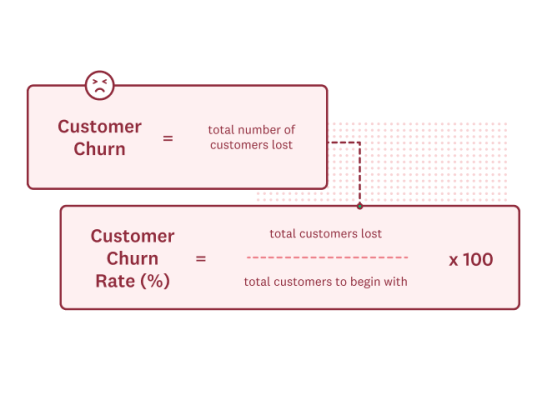
It’s easy to see how the revenue gap becomes tougher to fill as churn increases. But besides revenue, you’re also:
- Losing potential brand advocates
- Potentially sending a new group of detractors into the market every month
- Losing out on more potential business because of the negative word-of-mouth
Drive product adoption
CS managers should enable customers to leverage the product more effectively and identify more usage opportunities. Evaluate the following:
- What are the top customer use cases?
- What does that path to value look like for key accounts?
- How are customers adapting to using the solution?
- Do customers need more product training and guidance?
- Are there opportunities for champions to leverage more product features?
- Are my customers seeing ROI and achieving their goals?
Be proactive
Customers cannot achieve success if they aren’t bought into using your solution. It’s up to the CSM to drive product usage while retaining multiple accounts and tracking critical usage metrics, including active usage, time spent in the product, activation rate, and feature usage.
Make it easy to share feedback
The easier it is for customers to share feedback, the more input you’ll get. Here are some quick tips to help you simplify customer feedback collection:
- Keep customer surveys short whenever possible. By sticking to essential questions only, you’ll boost survey response rates and generate more reliable data
- Use mobile-friendly surveys to maximize customer engagement. Everyone lives on their phones these days—surveys should, too
- Make sure your survey design is on-brand and easy-to-read. User experience is just as necessary when collecting feedback as when you’re selling and marketing
- Include open-ended questions so customers can expand. You’ll get the greatest value from customer feedback when it’s both quantitative and qualitative
Learn from churned customers
Though not ideal, customer churn can teach you a lot about your business. Ask churned customers what compelled them to cancel or stopped them from renewing. For reporting purposes, it helps to give them a drop-down list of predefined reasons (e.g., too expensive, no current need, dissatisfied with service). But, again, you should also allow for open responses so they can share specifics.
An attrition survey is more than a post-mortem thought. Beyond revealing product and service development opportunities, a churned customer’s comments could help you win them back.
Feedback shouldn’t end when a customer cuts ties. In fact, it’s a critical time to get input. Their feedback can shape your retention efforts or even stop them from leaving.
Make your customers feel appreciated
Customer appreciation is fundamental to customer retention because people like to know that your business values them. Here are a few ways to show appreciation:
- Act on feedback: When you come out with features and services customers have requested, they’ll see that you appreciate their feedback. On the other hand, if your product is stagnant, they might start shopping for alternatives.
- Offer incentives: Loyalty programs are great for customer retention. They encourage repeat purchases, keep your company top-of-mind, and add fun to the buyer experience. Loyalty gifts and exclusive events are great too. When customers hit a milestone, recognize their achievements or offer a discount on their next renewal.
- Create a customer advisory board: This builds stickiness with a core set of customers and creates a candid dialogue that can inspire new ideas and add perspective.
- Say “thank you”: It’s a small gesture, but it can go a long way. Send customers an email thanking them for their loyalty. Or, you could even go old-school and send a letter.
Challenge #6: Achieving high-growth revenue targets
While Sales teams generally focus on bringing new business to an organization, Customer Success teams drive retention and grow account revenue by identifying expansion and cross-sell opportunities.
But that’s easier said than done. Here are tips CS teams can employ to generate more revenue.
Create an automated retention process
According to Bain & Company, a 5% increase in retention rates raises profits by 25% or more. Creating a retention program that hones in on key moments where customers decide to cut ties can prevent attrition.
Fifty-three percent of companies report experiencing more competition in 2023 compared to 2022, which means you need to stay ahead of the market. Use customer engagement methods—like nurture emails, customer surveys, special offers, and personal touches—to keep customers from going dark. Also, remember that not everyone will stay. The consolation prize may be insights that help you keep the next customer on board.
Once you’ve mapped out a flow for at-risk customers, automate the process as much as possible. Use your CRM, marketing automation, and other tools to create a professional, engaging customer experience that demonstrates value.
Connect customers’ business goals to the product
Ensure your CS team can connect their key performance indicators with the customer’s overall business goals and initiatives. According to Jeannie Walters, customer health scores don't always include business outcomes for the customer.
When CSMs showcase how customers’ product usage connects to company goals, they’re much more likely to renew or expand their contracts.
Identify cross-sell and upsell opportunities
How customers deploy your products and services will continuously evolve. After all, their company OKRs aren’t stagnant, and the strategies they implement to achieve those goals will change over time.
It’s critical for CS professionals to regularly evaluate customer insights and determine areas for product optimization, improvement, and scale. As new customer strategies arise, additional features could benefit customers’ success.
Rather than a sales pitch, CS expansion conversations will likely happen organically during regularly scheduled meetings. The benefit? When you establish trust early in the relationship, customers will be more likely to expand their product usage as time progresses.
Challenge #7: Communicating ROI, internally and externally
Customer success leaders must demonstrate their team’s ability to drive positive financial growth for their organization while also proving ROI to customers. Here’s how.
Regularly present CS metrics to executive leadership
Calculate and present metrics that bridge the gap for CS across the organization. Key metrics include those listed in the metrics section above, as well as cross-sell and upsell.
Host quarterly business reviews with customers
Quarterly business reviews (QBRs) are vital for advancing customers’ desired business outcomes from employing your products and services. They also enable CSMs to re-evaluate their customer’s progress consistently.
Here are tips for conducting a successful QBR:
- Build an agenda before hosting the QBR
- Invite key decision-makers, not just your key contacts, to the discussion
- Present product benchmarks, insights, and key results
- When possible, showcase the customer’s return on investment
- Create an action plan for the future and set goals to achieve by the next quarterly review
Ready to optimize your customer success program?
The customer success strategies and metrics we’ve highlighted here serve as a guide to start uncovering insights and trends, so your team can take swift action that’ll keep customers happy and deliver on business goals.
If you’re looking to optimize customer retention, attract new customers, and build loyalty, then asking, listening, and acting on feedback will help set you up for success. With SurveyMonkey, you can use one platform to get the insights you need – and seamlessly share those insights with key collaborators to put the customer experience at the heart of your brand.
Put CX at the heart of your business
Get the insights you need to delight and retain customers, and drive revenue growth with SurveyMonkey.
Net promoter, Net promoter Score, and NPS are trademarks of Satmetrix Systems, Inc., Bain & Company, Inc., and Fred Reichheld.


